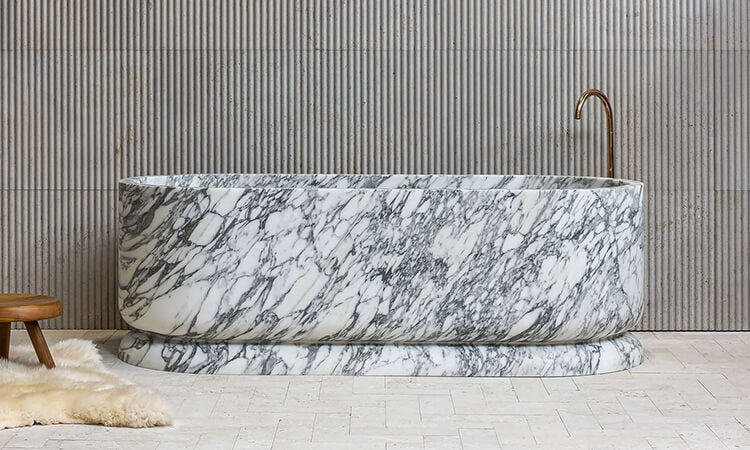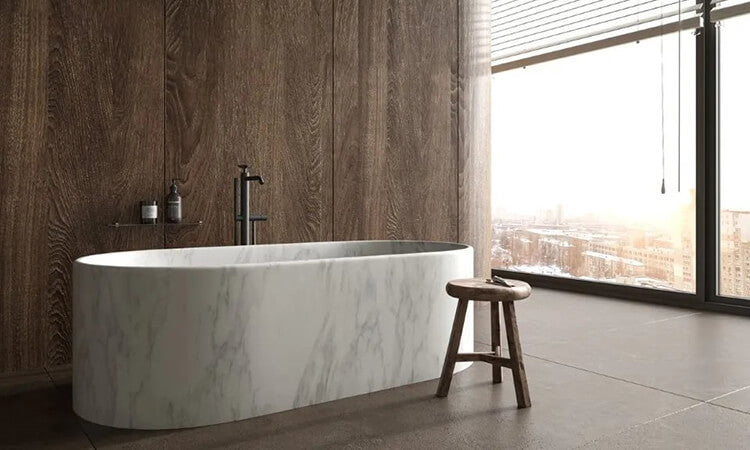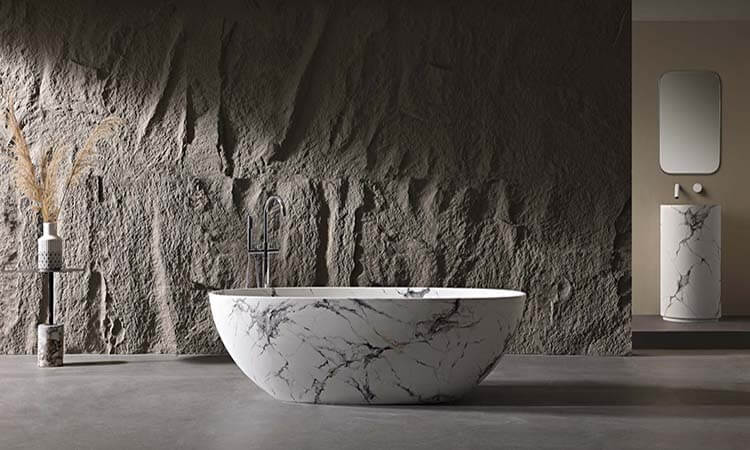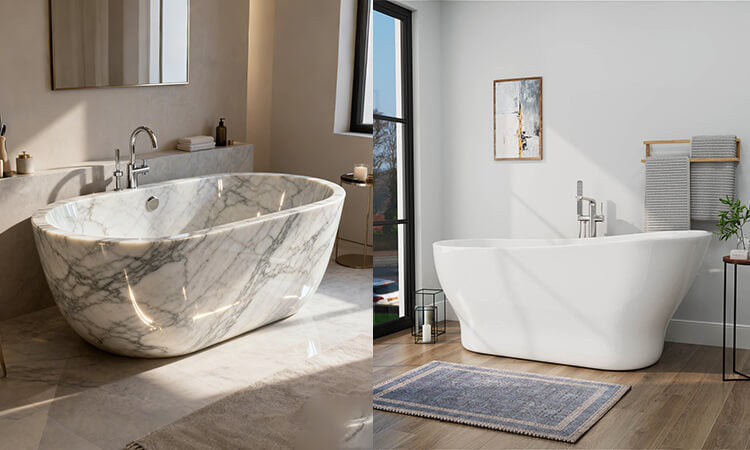Over the past few years, wooden bathroom vanities have seen a surge in popularity, prized for the natural warmth and character they bring to a space. Among the many wood options out there, birch has started to catch the eye of homeowners. Its smooth grain and approachable price point make it an appealing alternative to more expensive hardwoods.
Still, bathrooms are tricky environments. With constant humidity, steam, and the occasional splash of water, not every wood can hold up well over time. So the big question is: Is birch really a good choice for a bathroom vanity?
In this article, we’ll take a closer look at birch—covering its material strengths, style versatility, and maintenance needs—so you can confidently decide whether it’s the right fit for your bathroom.
First Things First: What Bathroom Conditions Demand of Wood
Before deciding whether birch is a smart choice, it helps to understand the tough environment a bathroom creates. Unlike most other rooms in the house, bathrooms stay humid almost all year. Daily routines—splashing water at the sink, hot steam from showers, and the use of soaps or cleaning agents—constantly put wood under stress.
For a wood vanity to truly hold up in this setting, it needs to meet three critical requirements:
- Strong Water Resistance: The wood shouldn’t swell, warp, or crack after absorbing moisture.
- Good Resistance to Cleaning Agents and Steam: It must be able to handle detergents and damp air without rotting or growing mold.
- High Dimensional Stability: It should remain solid and straight even as the bathroom cycles between wet and dry conditions.
If a wood type can’t check all three boxes, its beauty won’t last long. No matter how attractive the finish may be, problems like swelling, warping, or decay will eventually show up.
Birch as a Vanity Material: Clear Strengths, but Noticeable Weaknesses
Birch is a popular choice in furniture, often appearing in mid- to high-grade pieces—from Scandinavian designs to minimalist Japanese styles. But when it comes to bathrooms, its performance is mixed. While birch has some attractive advantages, it also comes with notable drawbacks.
The 3 Advantages of Birch: Beauty Meets Affordability
Fine grain and natural elegance
Birch features a straight, delicate grain with minimal knots, and its light yellow to pale white tones give it a fresh, understated charm. Whether it’s finished with solid-color paint or a clear varnish that highlights its natural grain, birch fits seamlessly into modern, Scandinavian, or Japanese-inspired bathrooms. For homeowners looking to “lightly renovate but make a big visual impact,” birch vanities can instantly warm up a space.
Even texture and easy to work with
With moderate density and uniform texture, birch is less prone to chipping or cracking during cutting, sanding, or carving. This versatility makes it ideal for a range of vanity styles—floating, freestanding, drawer-based, or open-shelf designs—perfect for custom renovations.

Budget-friendly with high value
Compared to pricier hardwoods like walnut, oak, or teak, birch delivers significant savings. A vanity of similar size can cost 30–50% less when made from birch than from oak. For homeowners who want the natural warmth of wood without stretching their budget, birch is a compelling option.
The 2 Drawbacks of Birch: Bathroom-Specific Weak Points
Poor water resistance and susceptibility to warping
This is birch’s biggest challenge in a bathroom setting. Its softer structure and porous surface make it more absorbent, so without proper sealing, prolonged exposure to water can lead to swelling, cracked surfaces, warped cabinets, and even stuck drawers. Common problem areas include the basin seams and the vanity base.
Lower resistance to decay and mold growth
Birch isn’t as resistant to corrosion or rot as harder woods like oak or teak. In humid conditions, leftover water or cleaning residues can penetrate the wood, causing odors, dark stains, and mold—compromising both the appearance and the longevity of your vanity.
Want a Birch Vanity? Follow These 4 Tips to Minimize Risks
Although birch has its weaknesses in water resistance and durability, it can still be a viable choice for bathroom vanities. With proper treatment, smart design, and routine maintenance, a birch vanity can be both stylish and long-lasting.
Choose “Specially Treated Birch”
Regular birch is risky in humid environments, so look for panels treated specifically against moisture and decay. Two common treatments include:
- Vacuum Pressure Treatment: Birch is placed in a vacuum chamber and infused with preservatives that penetrate deeply, forming a protective layer resistant to mold and insects.
- Edge Sealing and Waterproof Coating: Panel edges and seams are sealed with waterproof glue or strips, and the surface is finished with waterproof varnish or paint to block water penetration.
Design to Avoid “Water-Prone Zones”
Thoughtful design can significantly reduce water damage:
- Integrated Countertop and Basin: Fewer seams mean fewer opportunities for water to seep in. For vessel sinks, apply a generous waterproof sealant at the joint and reapply regularly.
- Raised Cabinet Base: Elevate floor vanities 4–6 inches (10–15 cm) above the floor and coat the base with waterproofing, or use metal legs to prevent direct moisture contact.
- Sealed Storage Design: Closed drawers with waterproof liners offer better protection than open shelves, which are more exposed to humidity.
Practice Preventive Maintenance
Birch requires consistent care to stay in top condition:
- Wipe Up Water Promptly: Dry splashes after each use, especially around faucet bases and basin edges.
- Reapply Waterproofing Regularly: Every 3–6 months, treat the surface with a wood sealer.
- Use Mild Cleaners: Stick to neutral detergents like soapy water. Avoid harsh acidic or alkaline cleaners that can damage protective coatings.
- Maintain Good Ventilation: Run an exhaust fan or open a window after showers to reduce humidity.
Mix Materials to Reduce Risk
If a full-birch vanity feels too risky, hybrid designs offer a practical compromise:
- Stone or Quartz Countertops: Pair durable, waterproof quartz or sintered stone tops with birch cabinet bodies.
- Metal Framework with Birch Panels: Combine a sturdy aluminum or stainless-steel frame with birch fronts to balance stability and aesthetic appeal.

How Birch Compares with Other Woods
To see where birch really stands, it helps to compare it with other popular bathroom vanity woods:
| Wood Type | Water Resistance | Corrosion Resistance | Style & Look | Price Range | Best For |
|---|---|---|---|---|---|
| Birch | Moderate (needs treatment) | Moderate (needs treatment) | Light, fresh, minimalist | Low–Mid | Budget-conscious, style-driven homeowners willing to maintain |
| Oak | Strong | Strong | Bold grain, rustic or classic | Mid–High | Families looking for durability and natural texture |
| Teak | Excellent | Excellent | Warm tones, luxurious feel | High | High-budget households seeking premium quality |
| Pine | Weak | Weak | Rustic and natural | Low | Not recommended—prone to warping and mold |
Birch’s main appeal lies in its affordability and light, elegant aesthetic—but it really depends on proper treatment and ongoing maintenance. Oak is a safe, all-around choice, offering durability with less fuss. Teak sits at the top in terms of luxury and longevity, ideal if budget isn’t a concern.
Further Reading: Which Wood Is Best for Bathroom Vanity Cabinets?
Ending
So, is birch a good choice for a bathroom vanity? The short answer: yes—but with some conditions.
If you love birch’s light, refined grain and are willing to invest in treated materials and regular maintenance, it can be a stylish, cost-effective option. On the other hand, if your bathroom has poor ventilation, you prefer low-maintenance solutions, or you’re not up for routine upkeep, sturdier woods like oak—or even non-wood alternatives such as quartz or sintered stone—may be a more reliable choice.
At the end of the day, there’s no one-size-fits-all solution. The key is to match the material to your bathroom’s environment and your lifestyle. With the right selection and proper care, your vanity can remain both beautiful and functional for years to come.







